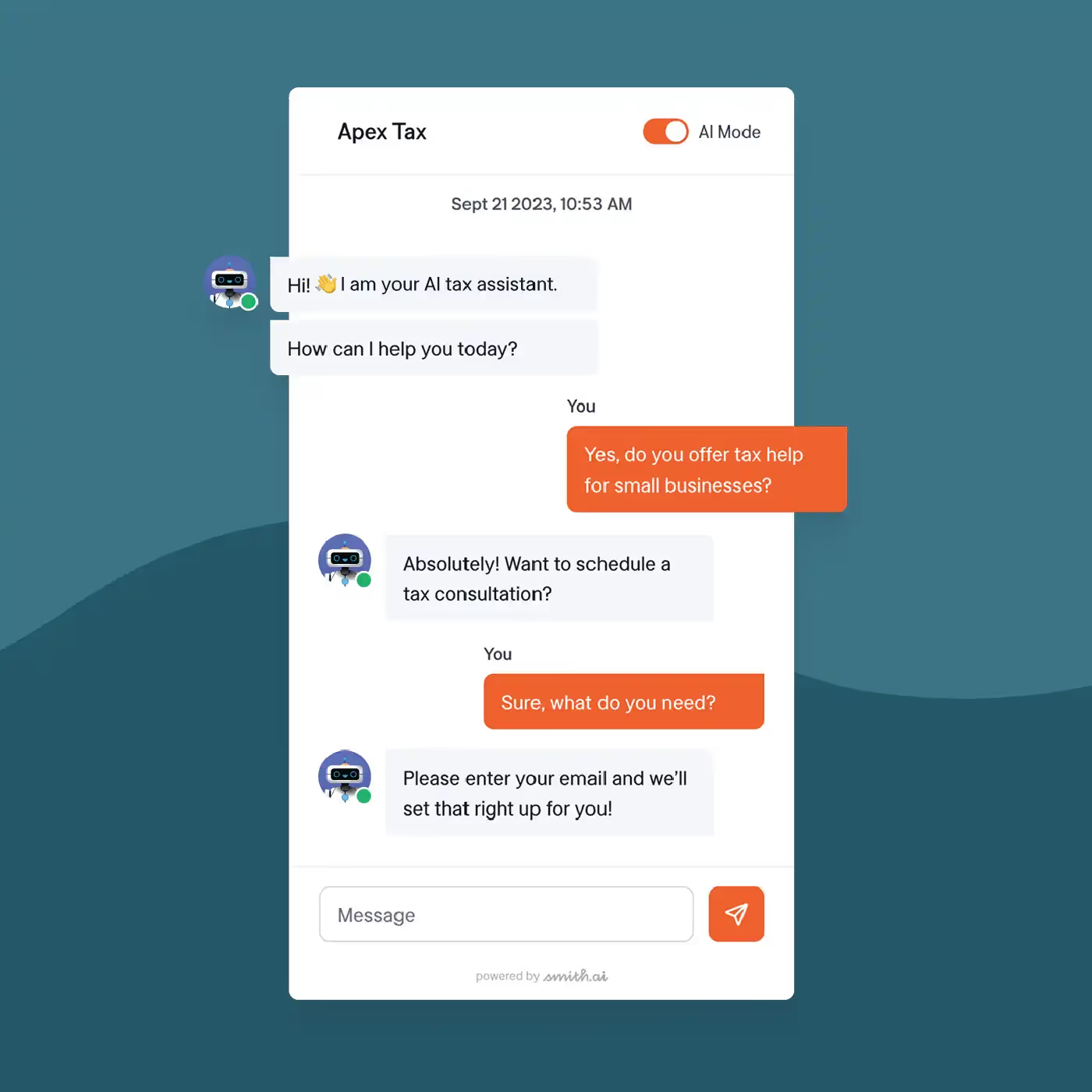The Complete Guide to Automated Telephone Systems for SMBs
The Complete Guide to Automated Telephone Systems for SMBs

It's 2 PM and you're finally making progress on that project you've been trying to finish for weeks when the phone rings. Another customer asking the same question you've answered five times today: "What are your hours?" You respond politely, hang up, and realize you've completely lost your train of thought.
This happens daily to thousands of small business owners. Running a business means juggling many roles, and every call interrupts your focus. Automated telephone systems solve this problem by managing calls efficiently without sacrificing your productivity.
These systems use smart call routing and Artificial Intelligence (AI) call answering to connect customers to the right information fast. That reduces frustration and lets your team handle the calls that really need human attention.
This guide covers how automated telephone systems help small and medium businesses by boosting customer satisfaction, lowering costs, and adding flexibility. It also highlights key features to look for and real-life examples showing how businesses regained time and improved service.
Benefits of an Automated Telephone System
Automated telephone systems do more than answer calls. They improve customer relationships, save money, and give your business room to grow.
Deliver a Better Customer Experience
Have you ever called a business after hours and actually reached someone? Automated systems make this possible by providing 24/7 availability.
Your system answers calls at 3 AM as professionally as at noon, meeting modern customer expectations without requiring overnight staff. No more choosing between personal time and potential sales calls.
AI call answering handles routine questions, cutting wait times and ending the frustration that causes customers to hang up. When customers get immediate answers, they're more satisfied and more likely to buy.
Many systems integrate with your customer database, recognizing returning callers and personalizing conversations automatically. This lets customers feel valued without you remembering every detail.
Consistent professionalism is maintained on every call, day or night, no matter call volume. You won't have to worry about inconsistent service quality during busy periods.
Reduce Costs and Optimize Resources
Have you added up your phone expenses lately? Most business owners are shocked by the total.
Voice over Internet Protocol (VoIP) based systems can cut communication costs by as much as 75% compared to traditional phone lines. Those savings can be reinvested in growth or used to finally upgrade your equipment.
Cloud-based phone systems eliminate the need for expensive hardware and maintenance. Information Technology (IT) headaches vanish along with bulky equipment.
When staff focus on complex issues instead of repetitive calls, productivity and job satisfaction rise. Happier employees deliver better customer experiences.
Scale and Stay Flexible
Busy seasons no longer cause panic with automated telephone systems.
They can manage thousands of simultaneous calls during peak times without extra hires. Seasonal rushes or Black Friday sales won't overwhelm your team.
Adding new locations or departments requires no complicated infrastructure or big expenses. Your phone system grows with your business.
Remote work is seamless. Team members can handle calls from anywhere while maintaining professionalism. Your business stays reliable, and your staff enjoys flexibility.
Smart automated telephone systems transform how Small and Medium Businesses (SMBs) handle communications. They stop interruptions, reduce missed opportunities, and free you to focus on strategic growth while delivering professional service.
Key Features to Look for in an Automated Telephone System
When choosing a system, look for features that fix your communication challenges and improve customer experience.
Intelligent Call Routing and Management
Advanced call routing boosts customer service without complicating your setup.
Modern systems direct callers to the right team member based on their needs. Skills-based routing ensures customers reach staff with the right expertise immediately, making customers happier and using your team's time better.
Customizable Interactive Voice Response (IVR) menus create the first impression for callers. Pick systems where you can easily change menus yourself without technical help, so you won't pay extra for updates.
Call transfer options matter as you grow. Look for systems offering both blind transfers and attended transfers, so you can speak privately with the recipient before connecting the caller. This keeps context clear and avoids frustrating customers by making them repeat themselves.
Seamless Integration with Other Tools
Integrating your phone system with business apps unlocks efficiencies.
Connection to your customer database gives staff instant access to caller info and history. That means more personalized and faster service without customers repeating information. Look for integration with helpdesk software, e-commerce platforms, and project management tools. This reduces manual work and speeds workflows.
Linking your calendar and email lets you manage appointments and follow-ups automatically. This saves time and prevents missed opportunities.
Actionable Analytics and Reporting
Data insights give you an edge over competitors.
The best systems track call volume, wait times, and resolution rates. These metrics help you optimize staffing and training with no guesswork.
Choose systems with customizable dashboards so you focus on what matters most. Real-time analytics let you adjust during busy times instead of discovering problems too late. Historical data guides strategic decisions. Some systems use AI-driven analytics to find trends or communication issues you might miss.
Focus on features that solve your pain points. If routine calls interrupt your day, prioritize automation. If customers complain about waits, choose intelligent routing. If calls are missed after hours, ensure 24/7 coverage.
How to Implement an Automated Telephone System Successfully
Good planning makes implementation smooth and effective.
Select the Right System
Start by listing your current challenges. Are you missing calls during busy hours? Struggling with call volume? Lacking key features like call routing or voicemail?
Set a budget including setup and ongoing fees. Factor in savings from efficiency and better service. The cheapest option isn't always the best value.
Prioritize must-have features like IVR, routing, voicemail, and mobile access. Extras can wait.
Research vendors that specialize in SMB solutions. Generic systems can create more problems than they solve.
Request demos focused on your business scenarios. Avoid generic sales presentations.
Check references from similar businesses to understand real-world usability.
Test the system from both staff and caller perspectives. If the interface isn't user-friendly, adoption will suffer.
The goal is a system that meets today's needs and grows with your business. The right automated phone system should adapt to changing needs and integrate seamlessly with existing tools.
Step-by-Step Setup
Plan: Set a timeline, assign responsibilities, and communicate with your team. Don't try to do it all alone.
Configure: Work with your vendor to set call routing, menus, voicemail, and integrations.
Test: Simulate calls and verify integrations. Fix problems before going live.
Train: Educate staff fully. Provide guides and appoint power users to assist colleagues.
Go Live: Pick a low-traffic day. Have support ready and monitor closely.
Optimize: Continuously review analytics and feedback. Adjust call flows as needed.
View implementation as ongoing. Regular improvements maximize value.
responsiveness.
Call reporting improved billing accuracy and client trust. Attorneys spent more time on cases, less on phone administration.
Measuring Success with Your Automated System
Track these Key Performance Indicators (KPIs) to measure your automated telephone system's impact:
Call Volume Metrics: Monitor total calls handled, peak call times, and call distribution across different departments or functions.
Customer Satisfaction: Track call resolution rates, customer satisfaction scores, and reduced wait times.
Cost Savings: Calculate reductions in staffing costs, phone bills, and missed opportunity costs.
Team Productivity: Measure time saved on routine calls and increased focus on high-value activities.
Business Growth: Monitor increases in customer inquiries handled, sales conversions, and overall customer retention.
Regular monitoring helps you optimize system settings and prove Return on Investment (ROI) to justify the technology investment.
Common Implementation Challenges and Solutions
Challenge: Staff resistance to new technology Solution: Involve key team members in selection process and provide comprehensive training with ongoing support.
Challenge: Customer confusion during transition Solution: Communicate changes in advance and ensure new system is thoroughly tested before launch.
Challenge: Integration difficulties with existing systems Solution: Work with vendors who have experience integrating with your specific business applications.
Challenge: Unexpected costs and feature limitations Solution: Request detailed pricing and feature documentation upfront. Test all critical functions during trial periods.
Challenge: Poor call quality or reliability issues Solution: Verify internet bandwidth requirements and choose providers with strong Service Level Agreements (SLAs).
Choosing the Right Automated Telephone System
When evaluating systems, consider these essential factors:
Budget and Total Cost of Ownership: Include setup fees, monthly charges, per-user costs, and integration expenses. Factor in potential savings from reduced staffing and improved efficiency.
Scalability: Ensure the system can grow with your business. Look for solutions that easily add users, features, and locations without major overhauls.
Integration Capabilities: Verify compatibility with your existing Customer Relationship Management (CRM), helpdesk, and business applications. Seamless integration prevents data silos and improves workflow efficiency.
Reliability and Support: Check uptime guarantees, disaster recovery options, and customer support availability. Your business communication can't afford frequent outages.
User Experience: Test the system from both administrator and end-user perspectives. Complex interfaces lead to poor adoption and ongoing frustration.
Your Next Steps
Remember why you started your business: to create something meaningful, not to answer routine calls all day. Automated telephone systems handle those tasks so you can focus on what matters.
The right system delivers exceptional service while giving you time and peace of mind. The technology is ready to solve communication challenges and improve both your business and personal life.
Ready to explore how an automated telephone system can change your business and personal life? Book a free consultation today.
Take the faster path to growth. Get Smith.ai today.
Key Areas to Explore
Technical Implementation Terms
Voice user interface (VUl) design
Speech recognition integration
Text-to-speech optimization
API connectivity and webhooks
Real-time data synchronization

Your submission has been received!












.svg)



